Estimated reading time 12 minutes, 27 seconds.
I received an unexpected gift from a passing floatplane pilot. Alas, I don’t know the pilot’s identity; but early on a mossy, wet morning along the British Columbia coast, as I watched steam rise from my coffee, I registered the distant music of a radial engine.
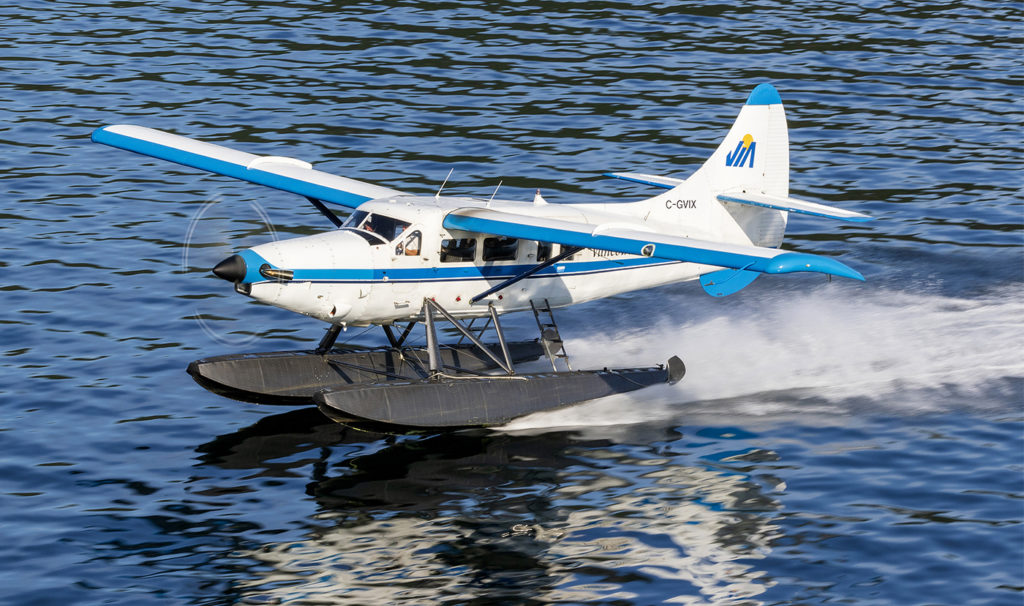
Above the craggy tree line I could just discern a de Havilland Beaver on floats, forced down to eye level by the soggy cloud base. The plane eventually dissolved back into the grey morning mists, but that sound continued to resonate in my imagination.
Never mind the romance
Better writers than I have penned romantic tales about the rugged world of float flying. There is no denying the aesthetic appeal, but a glimpse of that tiny Beaver trundling along the unforgiving B.C. coast led me to ponder the differences in how that unknown pilot and I understood the word “aviation.”
Half-boat and half-airplane, but inherently suboptimal as both, a floatplane demands the skills of both a mariner and an aviator, plus much more. Floatplane pilots represent a specialized and interesting skillset in aviation, and that passing Beaver sparked me to pursue the curiosity that every red-blooded pilot feels when he or she beholds an airplane bobbing at a dock.
For the vast majority of aviators, practising our craft entails guiding nose wheels along paved runways. Statistically, that pithy description would encompass most of us, whether flying recreationally or professionally. Most fliers fly between airports. Floatplane pilots, on the other hand, inhabit a world often devoid of aeronautical infrastructure. The knowledge and skills of that passing floatplane pilot were delightfully foreign to my experience of aviation.
To better appreciate the unique challenges of flying from the surface of a fluid, let’s have some fun with a scenario: Imagine that an otherwise highly qualified pilot – one normally found in the Flight Levels in a pressurized cylindrical projectile, wearing a white shirt with epaulets; in other words, highly experienced but untrained in water flying – climbs aboard a floatplane and heedlessly sets out to fly it.
Let’s call our hapless hero “Captain Confident.” How will it go? Does he have what it takes to fly those things? Suffice to say, don’t try this experiment at home!
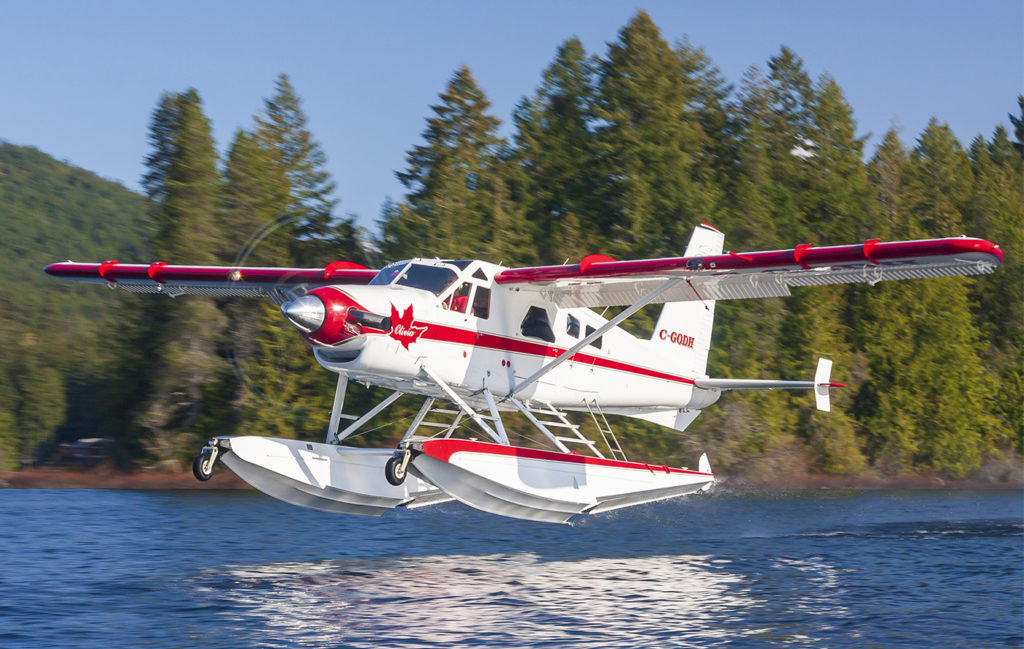
Experto Crede
I went in search of expertise. On the dock at scenic Silva Bay on Gabriola Island, I found Sean Evans, chief pilot of Gulf Island Seaplanes. He operates his de Havilland Beaver to destinations around B.C.’s south coast. Since arriving in the region in 2004, he has amassed over 12,000 hours on floats; much of it on the ubiquitous Beaver.
Evans found my scenario entertaining, venturing that even performing the pre-flight inspection without adult supervision might end in an embarrassing splash. He pointed out that if Captain Confident’s pre-flight routine is usually limited to “checking the manifest,” then he might find the life of a floatplane pilot a rude awakening. In addition to flying the airplane, a floatplane pilot’s duties may also include, um, everything. With a crew of one, the pilot is often responsible for weighing, loading and securing cargo, checking the weather, and briefing the passengers.
Captain Confident’s eyes would surely widen at the additional floatplane-specific safety equipment such as a bilge pump, paddles, bailing bucket, flares and “line” for securing the airplane. Proper nautical types never say “rope.” I stand corrected.
Bilge pump?! If you turn your back on a floatplane, there is always the possibility that it will grow heavier. Perhaps not reassuring, but all floats leak to some degree. Water weighs 10 pounds per gallon, so you want to leave as much of it as possible in the ocean. As a cardinal rule, floats must be pumped out every day; another of the pilot’s duties.

In remote locations, it’s not unusual for the pilot to be responsible for fuelling, too; but in any case, solving the fuel-versus-payload problem seems to be required on nearly every flight. Some missions require all of the range you can muster, but inherently at a considerable cost to payload. Most aircraft prohibit heedlessly filling the fuel tanks and the seats, but the inherent compromises are more acute on a floatplane where the floats already cost several hundred pounds of payload. A large part of the floatplane pilot’s brain must be optimized to this task if one wishes to make a profit with such machines.
Operating from the water is just like flying from a nice sanitized airport runway, with the possible addition of unannounced aircraft, waves, wakes, spray, tidal currents, logs, buoys, marine mammals and drunk kids roaring around on their dad’s Zodiac.
Diving into the deep end
It’s easy to anticipate Captain Confident’s reaction once the engine is running, the lines are cast off, and the dock begins to slip away. Like every first-time float pilot, the Captain will instinctively proceed to stand on the brakes in an attempt to restrain taxi speed. If you’ve flown a floatplane, then you did it, too! Admit it. The absence of brakes is just the first in a series of factors conspiring against our hapless Captain. Even idle propeller thrust is often too fast for sensible purposes, requiring the floatplane pilot to “blip” the magnetos off to scrub engine thrust. Water currents have a sinister intent where adjacent boats and docks are concerned; and if there is a breeze, the new floatplane pilot soon discovers that he is effectively directing two conjoined canoes with a propeller-driven weather vane mounted on top.
Taxiing is the regime where the floatplane’s personality asserts itself.

Let’s assume that the Good Captain knew enough to extend the water rudders before taxiing away; a system typically controlled by a lever in the cockpit, and mechanically connected to the rudder pedals. Extending the water rudders is essential for taxiing, else you effectively have no directional control. Don’t think of it like steering a car, however, because the response is slippery and slow like a boat. Think of them as providing heading control. Given winds and current, the airplane is likely not travelling in the direction it’s heading anyways! With enough wind, the wee water rudders are easily overpowered by the airflow against the rudder, making turns impossible. One solution is to taxi faster. Wait! Wasn’t that already a problem?
Turbine engines make taxiing considerably easier, with their ability to reverse propeller thrust. In the words of one wag, “If you don’t hit something the first time, you can try again.”
Once it’s airborne
Larry Langford is the president of Vancouver Island Airways, based in Campbell River, B.C., supporting tourism and exploration along the West Coast with his fleet of two turbine Otters.
If we ever decide to put a floatplane pilot on a coin, Langford might be a good candidate. Silver-haired, hardworking and modest, he admits to “somewhere over 23,000 hours on floats.” He remembered flying an airplane on wheels, but couldn’t quite recall whether it was 15 or 20 years ago.
“The airplane doesn’t know what kind of gear is under it once it’s airborne,” offered Langford when asked about floatplane technique. There’s wisdom in that. The salient challenges of operating a floatplane all occur when it’s trying to be a boat. My inner engineer whispered that it wasn’t quite true, however. Floats are a large aerodynamic imposition upon an airplane design, affecting both the performance and handling.

Perhaps most surprisingly, the effects are typically modest. The float’s boat hull cross-section is designed for low resistance on the water, but it happens to have fairly low aerodynamic drag, too. Additional struts, fairings and wires don’t help, but the average piston floatplane is only 10 or 15 knots slower than the wheel-configured equivalent.
Textbooks list numerous changes in handling induced by floats, but the practical matter is that most pilots just fly a single configuration – floats or wheels – and fail to notice such nuances as decreased static directional stability and increased adverse yaw. The mandated installation of additional vertical stabilizer area on many floatplanes would imply that those differences were not lost upon the certification authorities. On balance, Langford was right. In the air a floatplane flies conventionally, only slower.
The boat-to-airplane transition
Suffice to say that there is less procedure and more technique in flying a floatplane than a runway plane. There is nothing like the prescribed speeds and pitch attitudes that define takeoff in a jet, for example. The concept is simple; the execution more difficult. If the tips of the floats dig into the water, the airplane may keep going and flip over. This is to be avoided. Passengers are suddenly poor tippers when asked to swim the last hundred metres to the dock.
My experts describe takeoffs typically performed with full aft elevator against the downward influence of power against float drag. There will be spray and noise. Once there is sufficient speed, and the floats begin to plane across the surface – called being “on the step” – drag decreases, and with a bit of finesse the aircraft will accelerate to flying speed.
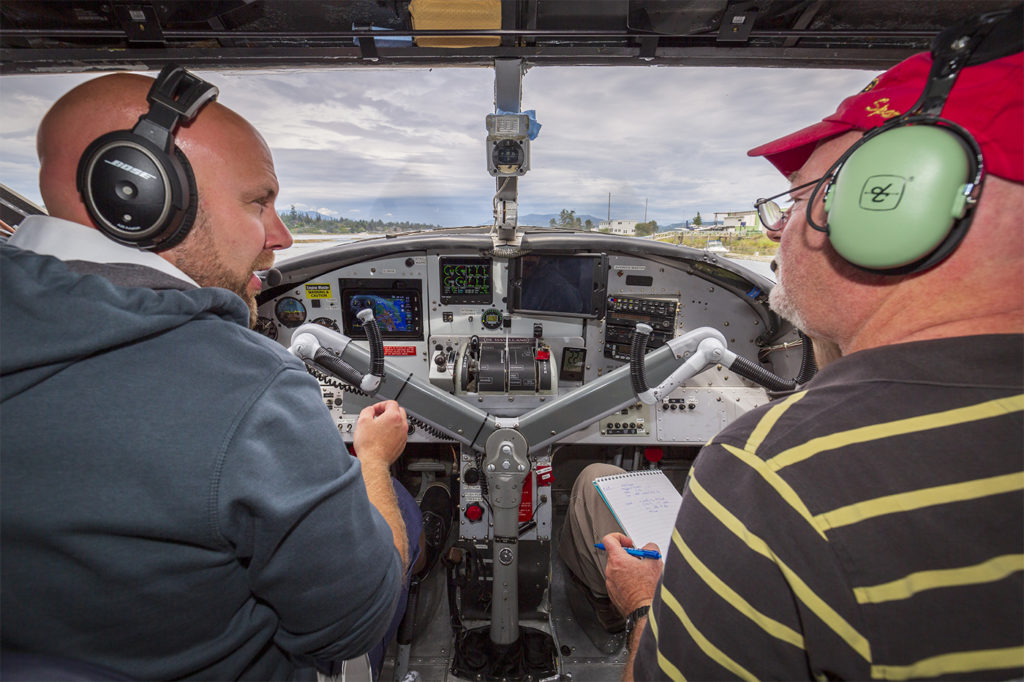
“Finesse” is the term for finding just the perfect pitch attitude to facilitate acceleration. Perversely, the water can generate suction upon the floats. In adverse combinations of weight, wind and waves, a mishandled takeoff can leave the floatplane a noisy speedboat incapable of liftoff. Experienced pilots employ tricks such as using ailerons to lift one float before the other, or “popping” down the flaps to break free of the water.
Landings are much the same process in reverse, without the confounding effects of engine thrust. Gauging wave height from above is an acquired skill, and excessive wave height can break a floatplane. Sean Evans’ answer was enlightening when asked, “What is the limit?”
“It depends,” he mused, launching into a brief dissertation on wave dynamics, terrain effects, and “rips” of wind against current. So, what’s the limit? Experience, it seems.
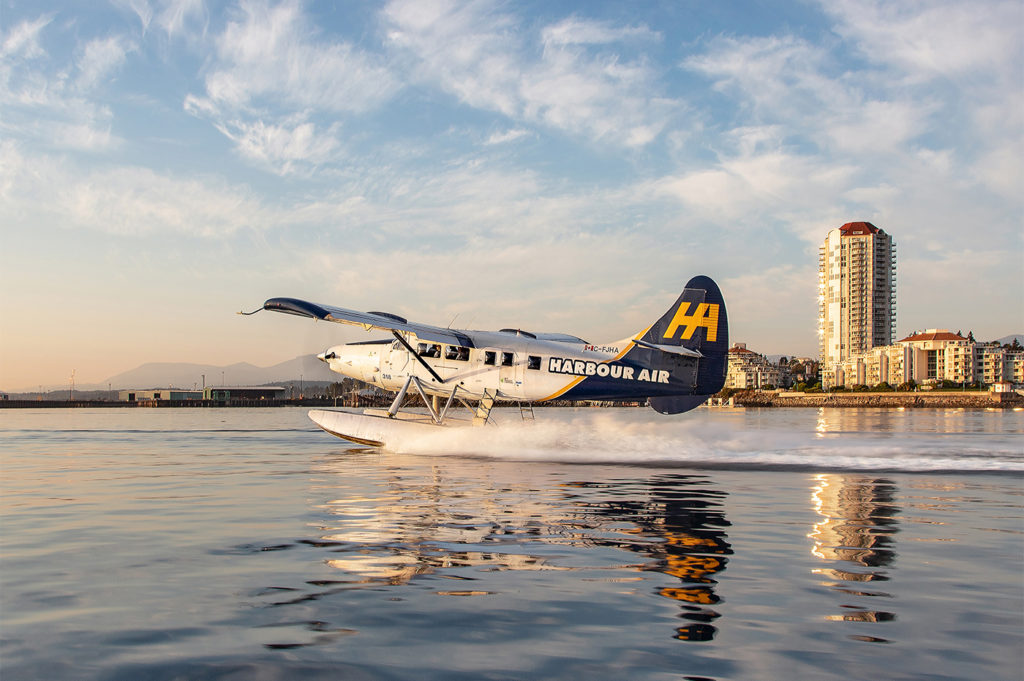
A fluid environment
In fact, what I consistently heard from the experts was that the salient skill in float flying isn’t the mechanical “stick handling” of the controls, but the judgment upon where and whether a takeoff or landing should be attempted. Wind and water conditions at the destination might make a landing ill-advised, for example, whereas a nearby bay or the lee side of an island could provide shelter, albeit at the expense of a longer taxi to the dock. An ability to read the conditions and adapt is essential for longevity.
Visual flight rules, or VFR, is inherently more difficult than “picking up a clearance” for instrument flight along airways. Unlike IFR flying, where one’s limits are largely quantitative – reported cloud base, runway visual range, etc. – the world of visual flying is less well-served by a thick rule book.
VFR flying is heavily dependent upon judgment. In the absence of weather reports, for example, the floatplane pilot asks himself not whether the conditions conform to regulations, but rather whether they’re safe for the mission. Any experienced pilot knows that those two lines don’t always run parallel.

The experts know the coast and its moods intimately. In lieu of a published terminal forecast, they cast an experienced eye upon the view out the window. Sean Evans described how to see the imprints of wind gusts upon the water, and explained how eddies and swirls on the surface can be indicative of rocks or submerged obstructions which risk ripping the bottom from a float. Larry Langford described how coniferous trees aren’t much good as indicators below about 15 knots windspeed. Alder trees apparently provide a more sensitive anemometer; the leaves changing their green hue in a gentle breeze. Among a floatplane pilot’s key skills is an ability to read their environment.
A gift of mystery
In an age where most flying involves managing technology, and where procedural conformity is sacrosanct, it’s nice to discover that some flying is still more of an art than a science.
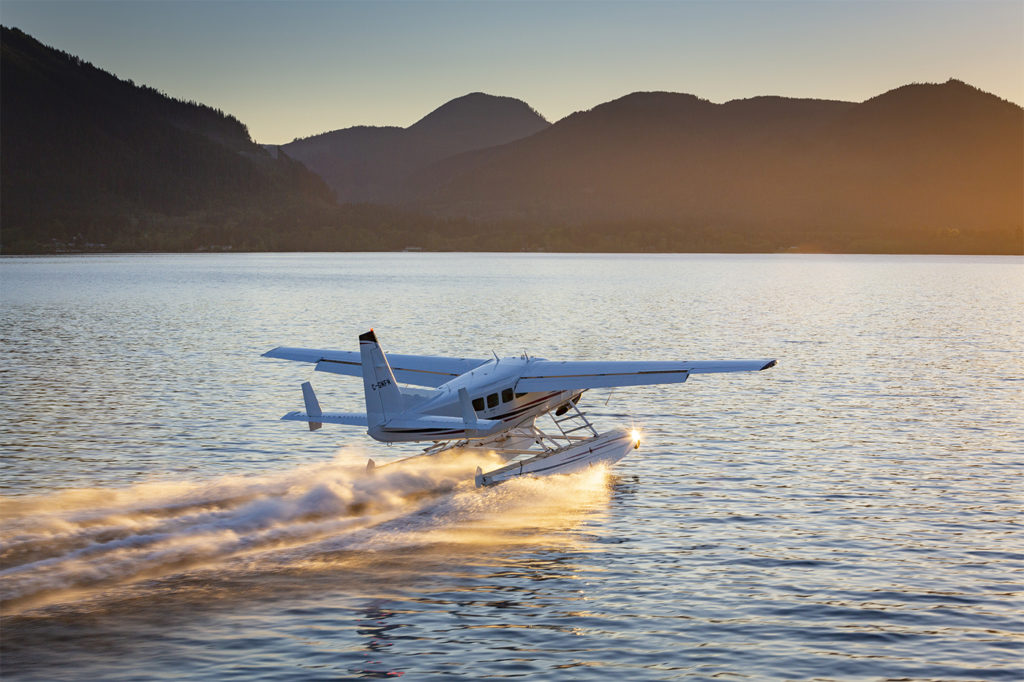
Floatplane pilots are far from a rare species on the West Coast, but they represent a self-contained subculture within aviation. That passing floatplane pilot left me a gift on that grey morning. It took a while to unwrap it, but I was left with the knowledge that aviation still has a bit of mystery and adventure left in it.
Robert Erdos is a contributing editor for Skies magazine. He is a graduate of the U.S. Naval Test Pilot School and a retired professional test pilot. Also an aviation enthusiast, his spare time activities include displaying vintage airplanes and flying his RV-6 kitplane.
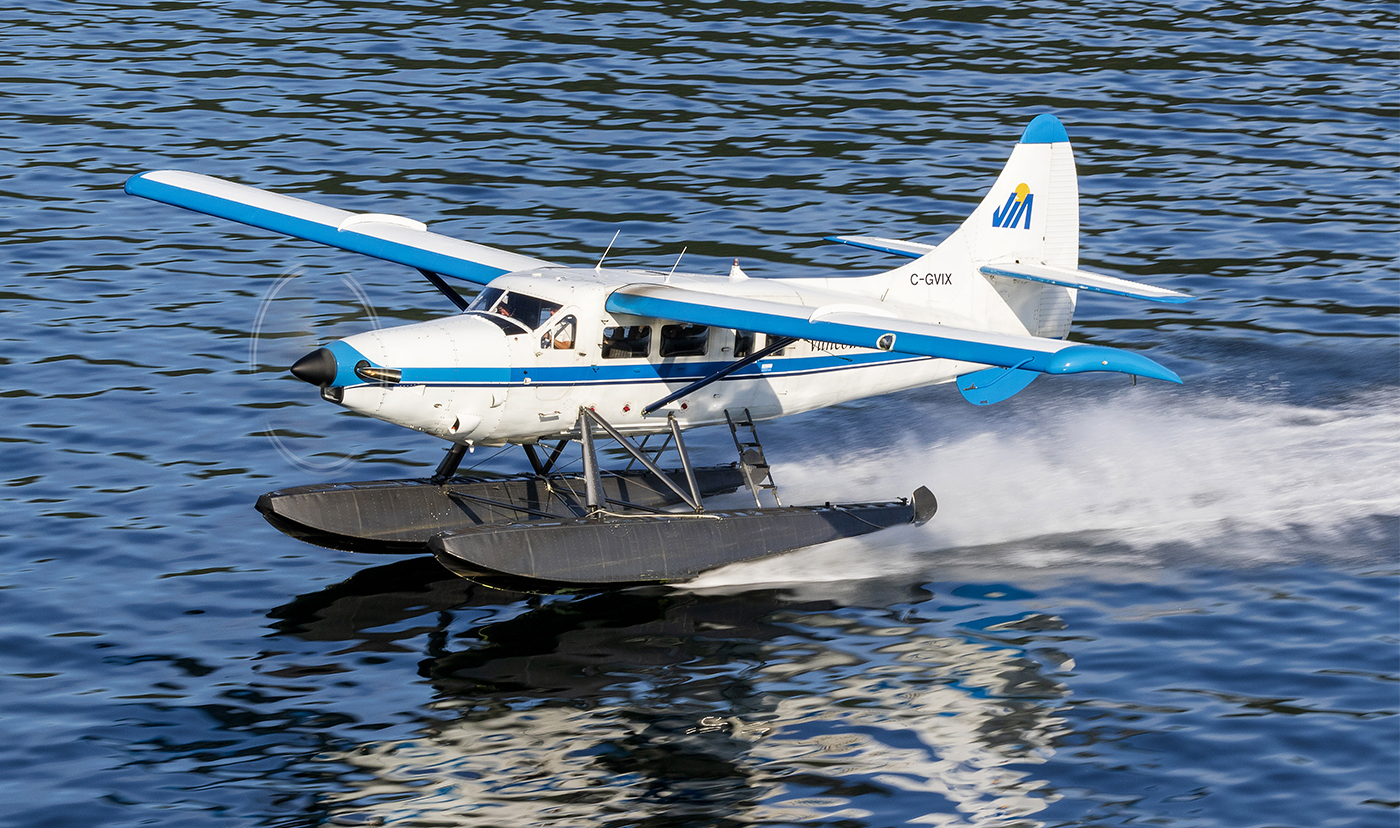

Kudos to Bob. I knew he was a gifted writer. I discovered he was also a poet.
I have 2 questions:
1st – what will happen if you land a floatplane with the water rudders down? I know it wont flip over, but will they break (snap cabling, etc)?
2nd – If you land on the stern of the floats, can you break them (as in, bend or crack them)? My thoughts are: the supporting structure will fail before the floats will.